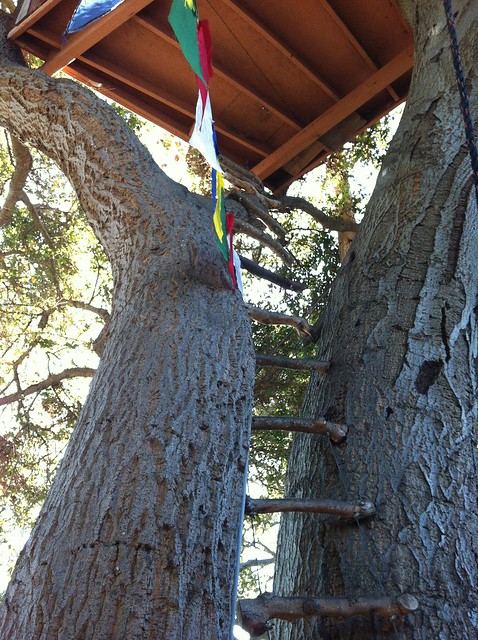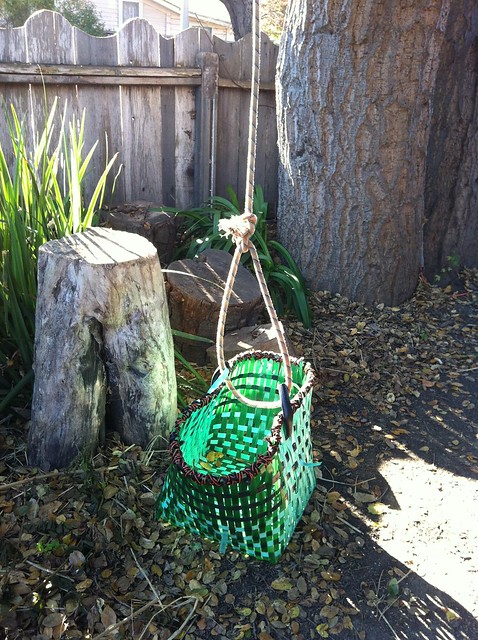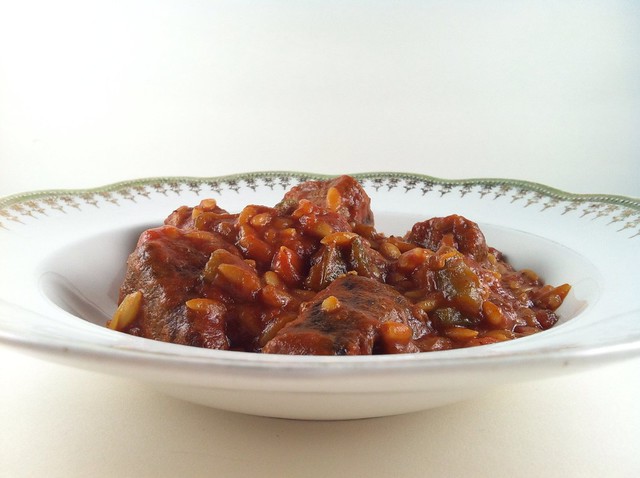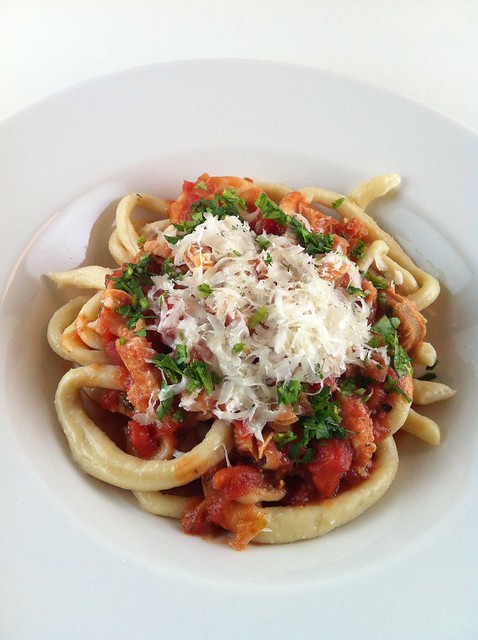Kara handed us two empty plastic quart yogurt containers from Trader Joe’s: If you have to go in the middle of the night and you don’t feel like getting out of the treehouse. I looked at my travel partner to quietly tell him that there was no way I’ll be squatting and peeing right next to him while he slept tonight! Even if he paid for dinner! And thus, our Santa Cruz adventure to welcome 2012 officially began.
I didn’t grow up in the Philippines in a hut; in fact, quite the opposite surrounded by concrete and marble. But I remember climbing a lot of trees and getting in trouble with our nannies and parents for it. I also remember flat bamboo beds tucked in a nook inside my grandmother’s house in the province of Pampanga for cool afternoon naps during the summer. In the last 10 years of my travel life, I’ve stayed in all sorts of places: old castles in Ireland, yurts in Big Sur, tents in Patagonia, clay houses in Tunisia and 3-sided huts in Isla Bastimentos where you wake facing the open sea, but nothing has made me feel like a kid again more than this treehouse in Santa Cruz, California.

Renting the treehouse was my first Airbnb experience. Working for a tech and business publishing company, I’ve read the bad press about the Web site, but I was willing to give it a shot when we were looking for a place to stay a few hours outside of San Francisco. Santa Cruz is a California beach town and it’s teeming with small hotels situated near the boardwalk and the ocean, but I wanted to share a unique experience with my new travel partner and have a different story to tell upon returning to New York City.
I immediately started emailing with Claudine, the treehouse owner, as soon as she approved of the date I wanted to rent the treehouse for. I paid the nightly rate and a $100 deposit was put on hold in my credit card for incidentals. What makes the treehouse even more quirky is that it had been built on a homeowner’s backyard. We laughed with half giddiness and half nervousness when we drove around the downtown area of Santa Cruz and realized that we would be sleeping 30 feet up above the neighbors’ private homes. Kara was taking care of the main house during the holidays, so I only had the pleasure of making arrangements with Claudine via email and SMS, but both were so welcoming that even this New Yorker softened up a bit. We entered their hippie-centric home to use the bathroom at night and in the morning, but we pretty much stayed up in the treehouse before and after New Year’s Eve dinner.

A very sturdy cable wire was installed to make climbing up and down the treehouse stable and easy. Even in the dark, before retiring for the night, we were pretty comfortable going up with just my headlamp illuminating our way. (Kara also lent us a flashlight when she gave us our pee cups!) A trapdoor let us in and we just had to carefully hoist ourselves up to be fully inside. A twin-sized bed was on the left and a narrow side table on the right, plus a floor cushion, but not much else other than finger paintings on the wall. One side was painted with splatters of red, a Jackson Pollock attempt perhaps, but unfortunately looked like gunshot wounds. (Ah, west coast self-expression!)

Besides the Tibetan flags outside the treehouse, my favorite was the plastic basket that was attached to an industrial pulley to help us bring our stuff up. Being the OCD person that I am, I packed our own comforter and my much-loved bamboo flat sheets from 3,000 miles away. (Seriously.) There was no heat the night of our stay and we were much too scared to light candles inside, so we mostly kept ourselves warm throughout the night using, well, body heat. Taking into consideration how cold I felt sleeping inside a tent in Kilimanjaro just two years ago, the “cold” California temperature was harmless.

A few hours of sleep later, we caught the first sign of sunlight from a small window right above the bed. Maybe people were slowly enjoying their mornings, but the street was very quiet. For a few minutes, we forgot that there was an entire neighborhood right below us waking up for their first breakfast of the new year.
I only had a vague idea of my partner’s travel sensibilities because of the circumstances of how we first met, so I was quite worried of how he would react to this experience. Would he be picky? Would he be freaked out? At the end of our stay, he let me know that he also enjoyed our time in Claudine’s treehouse and appreciated the fact that I tried to find a different kind of place to wake up in for our first trip alone together. I wouldn’t mind traveling with this one again.
Thanks, Kara and Claudine!
Related post/s:
San Francisco and Santa Cruz photos on Flickr
Rent Claudine’s treehouse when you’re in Santa Cruz, California








